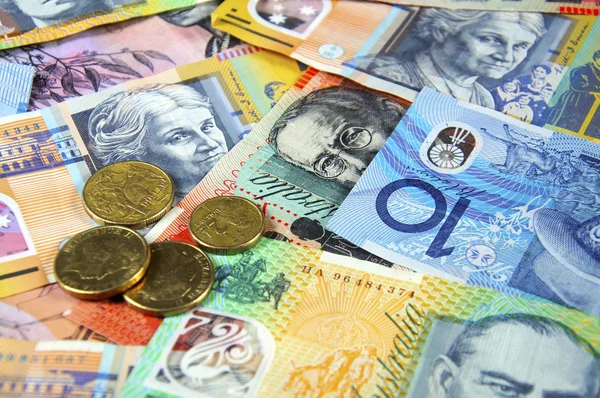The Australian Dollar (AUD) paused its recent rally on Monday, pulling back slightly after four straight sessions of gains. While positive manufacturing data from China offered some support, the AUD came under pressure following weak domestic building data and cautious market sentiment ahead of key U.S. events this week.
Australian Dollar Eases After Four-Day Rally
The AUDUSD pair slipped in early Asian trading, hovering near the 0.6800 level after last week’s gains driven by strong domestic inflation and credit growth. The pullback came after Building Permits in Australia fell 8.2% month-on-month in July, far exceeding expectations of a 4.8% drop and reversing June’s robust 11.9% gain.
On an annual basis, permits still showed a 6.6% rise, but that marked a sharp slowdown from June’s 27.4% surge, signaling cooling momentum in the housing and construction sector key contributors to Australia’s economic activity.
China PMI Recovery Lends Support
Despite the disappointing local data, the Australian Dollar drew some support from encouraging Chinese PMI releases, a critical factor for the AUD given Australia’s close trade relationship with China.
Caixin Manufacturing PMI rose to 50.5 in August, up sharply from 49.5 in July, signaling a return to growth.
The NBS Manufacturing PMI edged slightly higher to 49.4, though it marked the fifth consecutive month of contraction.
The NBS Non-Manufacturing PMI improved to 50.3, suggesting stabilization in the services sector.
These developments point to gradual recovery in Chinese demand, which is particularly supportive for Australian commodity exports such as iron ore and coal, helping cushion downside risks for the Australian Dollar.
Domestic Fundamentals Still Supportive
Despite Monday’s setback, broader fundamentals remain supportive of the Australian Dollar Recent data shows inflationary pressures and credit expansion continuing to trend higher:
Monthly CPI rose 2.8% year-over-year in July, well above the 2.3% forecast and the 1.9% prior reading, reducing the odds of an immediate RBA rate cut.
Private Sector Credit expanded by 0.7% month-on-month in July, the fastest pace since April, while annual growth accelerated to 7.2%, the strongest since February 2023.
These signals of resilient domestic demand suggest that the Reserve Bank of Australia (RBA) may maintain its neutral-to-hawkish policy stance, keeping the AUD supported in the medium term.
Dovish Fed Signals Keep USD on the Back Foot
The U.S. Dollar Index (DXY) remains under pressure, trading near 97.90, as markets price in a high probability of a Fed rate cut in September.
Key developments weighing on the USD include:
San Francisco Fed President Mary Daly signaling policymakers are ready to cut rates soon, describing tariff-driven inflation as temporary.
Fed Governor Christopher Waller indicating support for multiple rate cuts over the next 3–6 months to protect the labor market.
Chair Jerome Powell, at Jackson Hole, acknowledging rising labor market risks but cautioning that inflation remains a concern.
Legal setbacks for Trump’s tariffs, with a U.S. Court ruling many of his unilateral trade tariffs illegal, further dampening USD sentiment.
This dovish tone has kept U.S. yields under pressure, boosting risk-sensitive currencies like the AUD.
Key Levels and Market Outlook
From a technical perspective, the AUDUSD pair faces immediate resistance around 0.6850, with a break above potentially targeting 0.6900 in the near term. On the downside, support lies near 0.6750, with deeper losses likely only if risk sentiment sours or U.S. data surprises to the upside.
Traders will be watching several key events this week:
U.S. ISM Manufacturing PMI for August, due Tuesday, for clues on U.S. industrial activity.
Australian Q2 GDP scheduled later in the week, expected to show modest growth.
Ongoing Fed commentary ahead of the September FOMC meeting, which could shift rate expectations.
Market Sentiment and Broader Themes
The broader narrative remains one of USD weakness and AUD resilience, driven by diverging monetary policy outlooks. The Fed’s pivot toward easing contrasts with an RBA that is still cautious about inflation risks, creating a favorable backdrop for the AUDUSD pair.
However, risks remain:
Any setback in China’s recovery could weigh heavily on Australian exports and sentiment.
A stronger-than-expected U.S. labor report later this week could revive USD demand and temper AUD gains.
Domestic housing weakness, as seen in the Building Permits data, could start signaling cracks in Australia’s economic momentum if the trend continues.
Conclusion
The Australian Dollar’s subdued start to the week reflects a balancing act between weak building data and positive Chinese PMI figures, all against the backdrop of a softening U.S. Dollar environment.
For now, the outlook remains cautiously constructive for the AUDUSD pair. As long as the Fed maintains its dovish tilt and China’s economic data continues to stabilize, the 0.6850–0.6900 zone remains within reach.









